Today the fire alarm system has evolved a long way. Hence the designing of Advanced Intelligent Fire Alarm Systems as per International standards is a challenge which MAGNOVA can easily accept & successfully accomplish.
The designing of Fire Alarm System is not only limited to providing a conceptual design, but we also provide actual design drawings which includes Shop Drawings, Installation drawings, Wiring Diagram, Input/output Configuration which will help the installer to install the system accurately. Our design will be customized as per the various manufactures of the systems.
Digital Voice Evacuation is an extension of fire alarm system which is integrated with fire alarm system to provide occupants with digitally prerecorded messages to help them evacuate in case of emergency.
In a huge facility one system may not be sufficient, hence it is required to use many fire alarm systems, all of which can be networked as an integrated system with information available at single window. Our design team of MAGNOVA has designed & successfully delivered many such complex projects.
MAGNOVA offers designs for Network Integrated Systems using traditional wired technology, Optic fiber technology, IP based Networking using CAT 5 Wire or Wireless technology.
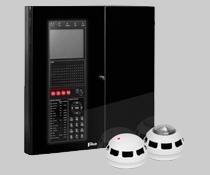
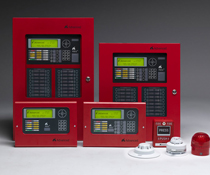
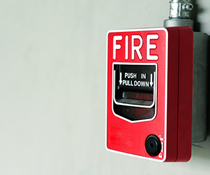
Flame detector is a sensor designed to detect and respond to the presence of a flame or fire. Responses to a detected flame depend on the installation, but can include sounding an alarm, deactivating a fuel line (such as a propane or a natural gas line), and activating a fire suppression system. When used in applications such as industrial furnaces, their role is to provide confirmation that the furnace is properly lit; in these cases they take no direct action beyond notifying the operator or control system. A flame detector can often respond faster and more accurately than a smoke or heat detector due to the mechanisms it uses to detect the flame
UV Flame Detectors UV detectors respond to radiation in the spectral range of approximately 180-260 nanometers. They offer quick response and good sensitivity at comparatively short ranges (0 – 50 ft). Because they are susceptible to arc welding, halogen lamps, and electrical discharges like lightning, they tend to be sited indoors. Thick, sooty smoke can also cause failures due to attenuation of the incident UV radiation. UV/IR Flame Detectors When a UV optical sensor is integrated with an IR sensor, a dual band detector is created that is sensitive to the UV and IR radiation emitted by a flame. The combined UV/IR flame detector offers increased immunity over the UV detector,, operates at moderate speeds of response, and is suited for both indoor and outdoor use. As with UV detectors, however, the detection range of these instruments may be reduced by heavy smoke.
In fas two types of system
1 addressable fire alarm system
2 conventional fire alarm system
3 spark detection
1Addressable fire alarm system is made up of a series of fire detectors and devices that are connected back to a central control panel. With addressable systems, each device has an address or location, enabling the exact detector that was triggered to be quickly identified. This makes addressable alarm systems ideal for large buildings, particularly commercial premises spread over a wide area.
Advantages of addressable fire alarms
• Quickly determine the location of a fire.
• Specific actions can be programmed by the user.
• Reduced likelihood and better handling of false alarms.
• More reliability, less likely to lose connection.
• Lower overall cost of wiring.
• Ability to monitor integrity of the system, with detector health checks.
Fire alarm systems that can be programmed
One of the biggest advantages of addressable fire alarm systems is that they can be configured so that a specific action triggers a specific response.
For example, cause and effect programming can be used to say that a particular ‘cause’ such as activation of a fire detector, has the effect of alarms sounding in a specified area and the system being put on alert mode in another. This means that phased evacuation can take place, with priority areas evacuated first. Each area of a building can then be evacuated one at a time, which allows safer fire evacuation procedures in large buildings. Reduce false fire alarms
False alarms cause disruption and can be costly, so it’s in any business’s interests to minimise their impact and reduce the likeliness of them occurring in the first place.
One of the advantages of addressable fire alarms is that they can allow air to be monitored through the detectors, so if air is contaminated for example with dust (which can activate some fire alarm systems) then a ‘pre-fire’ warning is triggered. This allows investigation to take place, so any issues can be rectified before a full scale false activation of the system takes place.
2 Conventional fire alarms are set up in zones, with each zone hardwired into a control panel or zone expander. Different devices have to be run on different zones, e.g. smoke detectors run on a separate zone from pull stations.The conventional fire alarm system is an early warning system design for small facilities.These fire alarm systems are inexpensive but sometimes it can be challenging locating the alarms.To put it simple, if a conventional fire alarm detects a fire, it may tell you the zone/ area of the fire but not the exact location of the fire. There’s no design where a specific fire alarm can signal exactly where the fire is occurring.If you are ok with knowing on the zone of a fire alarm, then a conventional fire alarm will do the trick.If you feel safer having a fire alarm system that tells you on the spot where a fire is present, you should go for an addressable fire alarm system.The addressable fire alarm system is an early warning system designed tolocate precisely where a fire is occurring.In fact, this fire alarm system will tell you the specific type of smoke alarm/ fire alarm sounding off, the room it’s within and the floor level. The addressable fire alarm system is perfect for large facilities because the faster you can locate a fire the more property and lives can be saved during an emergency.
3 A spark detection system is composed of three basic components. First is the detector, which is highly sensitive to optical radiation emitted by hot or burning particles. The detector receives an optical signal and converts it into an electronic signal. The electronic signal is received and processed by the central control unit, which in turn triggers the extinguishing system. The three components: 1. Central Control, 2. Detector, and 3. Extinguisher, are all integral parts of a successful spark detection and extinguishing system. 1 2 3 A spark detection system is typically used in pneumatic particle transport systems where there is potential for combustion or explosions. These include wood chips, cellulosic fibers, sawdust, AN6400 USER MANUAL
Spark Detection and Extinguishing System
chemical dusts, combustible vapors and any other combustible material. Other applications can be in mechanical transport systems such as conveyors or in the drop chutes.
The detector reacts to rapid changes in the optical signal so it is especially suited for viewing a cross section of a duct where the particles are in the field of view for only a short period of time. The purpose of the system is to provide a zone in the path of transport where no potentially hazardous spark can pass without being seen by the detector or detectors. Usually, two or more detectors must be used in order to ensure that the entire cross section of the transport zone is within the field of view of at least one detector. The extinguishing system used is a solenoid operated water spray located downstream from the detection zone. The water spray is set up to create a curtain through which the hazardous particle must pass. The Spark Detection controller provides the essential timing and the impulse to open the solenoid valve for a fixed period of time during which we are ensured that the spark has passed through the curtain of water. The timing is important, as the activation of the spray must not be too late as it will miss the spark. Also, to avoid unnecessary shut down and cleanup, the spray must not be on too long. Other, supplementary extinguishing systems could be Dry Powder, CO2, other clean agent gases where water is not suitable, complete water flooding where combustion could be catastrophic, system shutdown, or a combination of methods. All methods can be operated from the Spark Detection control.
The basic Spark Detection System includes two detectors, a control panel and an extinguishing system. This is the basic requirement for a successful spark detection system.
Two Way Communication systems is one of the basic requirements as per Indian Standards to be provided in every Commercial/Residential Buildings. This is to provide communication between occupants and the building security personnel in the event of emergency.
MAGNOVA have professionals equipped with design knowledge to design the system as per local norms & international standards.
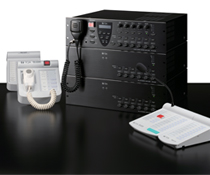
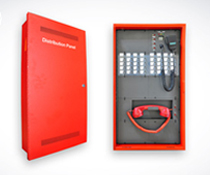
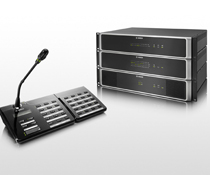
A public address system (PA system) is a sound amplification system used to allow a person or persons to address an audience at a greater volume than would be possible or practicable without such a system. At a minimum, such a system comprises a microphone, an amplifier and a loudspeaker. Examples of content include announcements and other audio material at sports stadiums, air and rail terminals, and the sound produced by a singer, musician or musical ensemble, as well as recorded music. A PA system may include multiple microphones and/or other sound sources, a mixing console to combine and modify multiple sources, and multiple amplifiers and loudspeakers for louder volume, greater coverage and/or wider distribution, such as that required to provide sound throughout an entertainment venue, an office building or retail space, or an outdoor environment.A public address or “PA” system is an electronic amplification system with a mixer, amplifier and loudspeakers, used to reinforce a given sound, e.g., a person making a speech, prerecorded music, or message, and distributing the sound to the general public around a building.
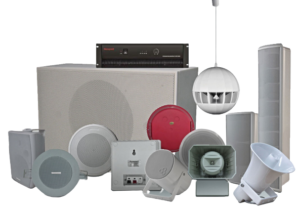
Office No. 08, Shree Jagannath CHS, Almeida Road, Chandanwadi, Thane (W), Mumbai-400601
WhatsApp us
Office No. 08, Shree Jagannath CHS, Almeida Road, Chandanwadi, Thane (W), Mumbai-400601